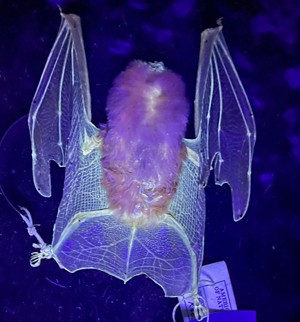Advertisement
Grab your lab coat. Let's get started
Welcome!
Welcome!
Create an account below to get 6 C&EN articles per month, receive newsletters and more - all free.
It seems this is your first time logging in online. Please enter the following information to continue.
As an ACS member you automatically get access to this site. All we need is few more details to create your reading experience.
Not you? Sign in with a different account.
Not you? Sign in with a different account.
ERROR 1
ERROR 1
ERROR 2
ERROR 2
ERROR 2
ERROR 2
ERROR 2
Password and Confirm password must match.
If you have an ACS member number, please enter it here so we can link this account to your membership. (optional)
ERROR 2
ACS values your privacy. By submitting your information, you are gaining access to C&EN and subscribing to our weekly newsletter. We use the information you provide to make your reading experience better, and we will never sell your data to third party members.
Environment
Newscripts
Attracting bats and uncovering fluorescent mammals
by Priyanka Runwal
December 3, 2023
| A version of this story appeared in
Volume 101, Issue 40
The truth about bat bait

Until 2017, a solitary wooden tower about 9 m tall, pyramid shaped, and supported by sturdy posts stood on a small island in the Florida Keys. A fishing lodge owner named Richter Clyde Perky built this structure in 1929 for an unusual purpose: pest control.
The tower was supposed to serve as a roost for insect-eating bats that might devour mosquitoes thriving in the surrounding mangrove swamps and salt marshes. To attract the chiropterans, he secured a bat bait from Charles Campbell, a bacteriologist who had constructed such towers in and around San Antonio. Although the exact recipe for this foul-smelling lure remains unknown, it possibly contained a mixture of bat poop and the ground-up genitalia of female bats.
But no bats came, and the experiment failed.
Although bats use odor cues to find their offspring, select mates, or locate food, it’s unclear if and to what extent they rely on scents to locate roosts. In a recent study focusing on three group-living bat species in Panama and the US, researchers did not find clear evidence that bat urine and droppings were reliable chemical lures for attracting bats to artificial bat houses (R. Soc. Open Sci. 2020, DOI: 10.1098/rsos.201055). Common vampire bats, on the other hand, were immediately enticed when the researchers played recorded calls from the bats’ roost mates.
Still, the business of using scents to bait bats persists. Sprays that mimic the smell of bat urine, poop, or pheromones continue to be sold on the market. They claim to attract chiropterans to artificial bat houses. Some concoctions even come with a 60-day money-back guarantee.
“In my experience, those bat attractants don’t work,” says Mylea Bayless, a mammalogist at the nonprofit organization Bat Conservation International.
But some people turn to them out of curiosity or frustration from bats’ not using the artificial houses they put up. The intent isn’t always mosquito control but often to attract bats to pollinate the flowers of many plants or devour agricultural pests such as moths and beetles. For others, it’s the joy of having bats in their backyard and providing an alternative refuge where natural habitats are shrinking.
“I would urge them to check and see if the design of the bat house they’re using is adequate and then reconsider its placement,” Bayless tells Newscripts. Putting bat houses on trees, for example, doesn’t work well because that placement is too shaded and accessible to predators, she explains. Mounting them on buildings or poles is a better option.
Although Perky’s tower and the bat bait he used failed to lure the winged mammals, the peculiar monument became a local landmark. In 1982, it was added to the US National Register of Historic Places. Hurricane Irma destroyed the structure in 2017.
Glowing bats

Reports of birds, reptiles, amphibians, and fish glowing under ultraviolet light have accumulated over the past decade or so. But only recently have researchers in Australia showed that such biofluorescence is also widespread among mammals (R. Soc. Open Sci. 2023, DOI: 10.1098/rsos.230325).
They shined UV light on 146 specimens, representing 125 mammal species, housed at the Western Australian Museum. Animals as varied as house cats, dogs, flying squirrels, bats, bandicoots, wombats, lions, and polar bears all fluoresced to varying degrees. “It was the light-colored fur—so, whites to light browns or very pale colors,” says Kenny Travouillon, lead author of the study and curator of mammalogy at the museum. “But the dark colors weren’t fluorescent at all.”
In bats, however, it wasn’t the fur that glowed, except when the animals sported goldenish hairs on their body. “It’s their skin that glowed a lot,” Travouillon tells Newscripts. “It’s quite beautiful to see.”
Such fluorescence can be traced to the presence of unpigmented keratin—a protein found in mammalian hair, nails, and the outer skin layer. For animals such as marsupials exhibiting a reddish glow, it’s the porphyrin pigments accumulating in the fur that may be responsible for the creatures’ lighting up. But why exactly these mammals evolved to fluoresce is still a mystery.
Advertisement
Please send comments and suggestions to newscripts@acs.org.




Join the conversation
Contact the reporter
Submit a Letter to the Editor for publication
Engage with us on Twitter